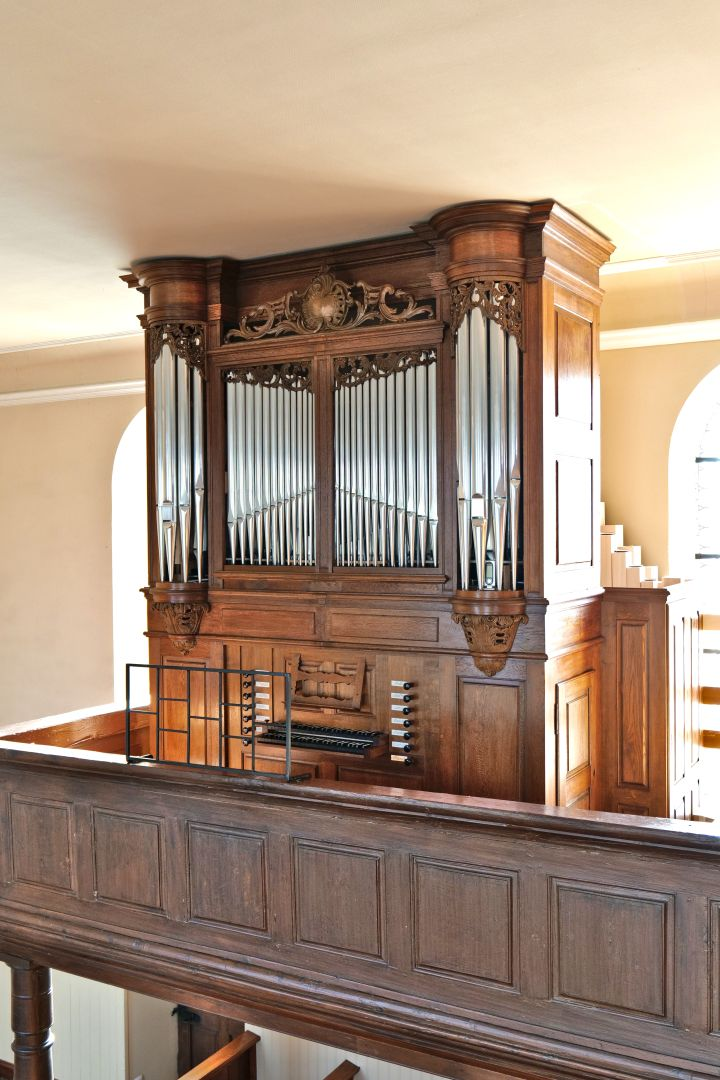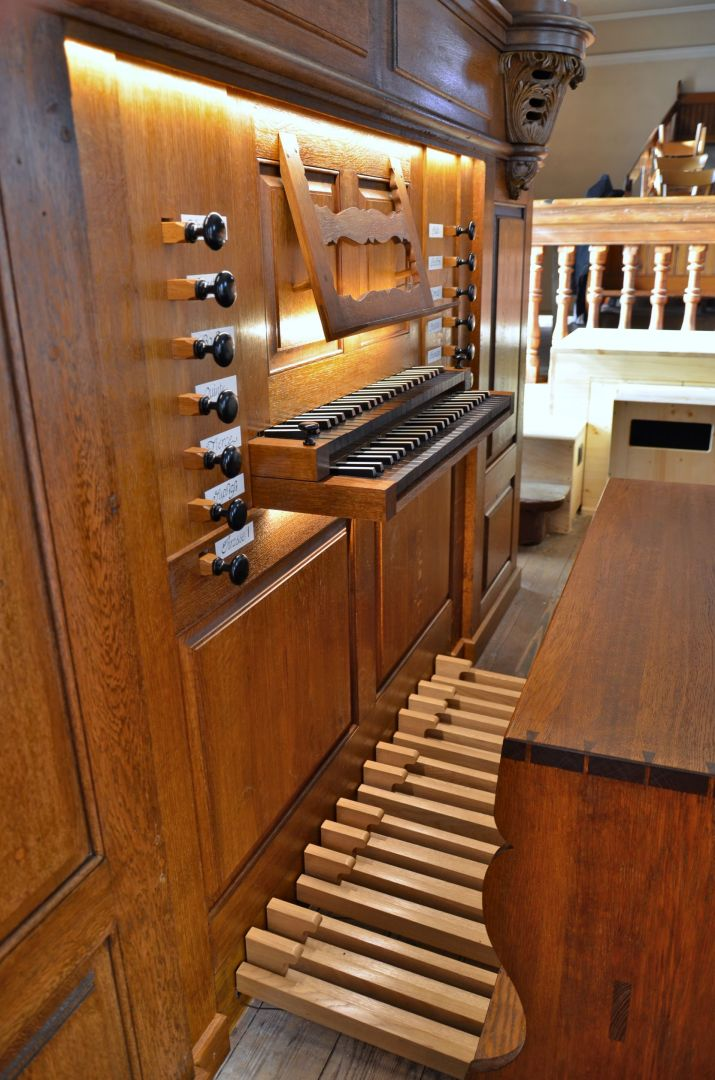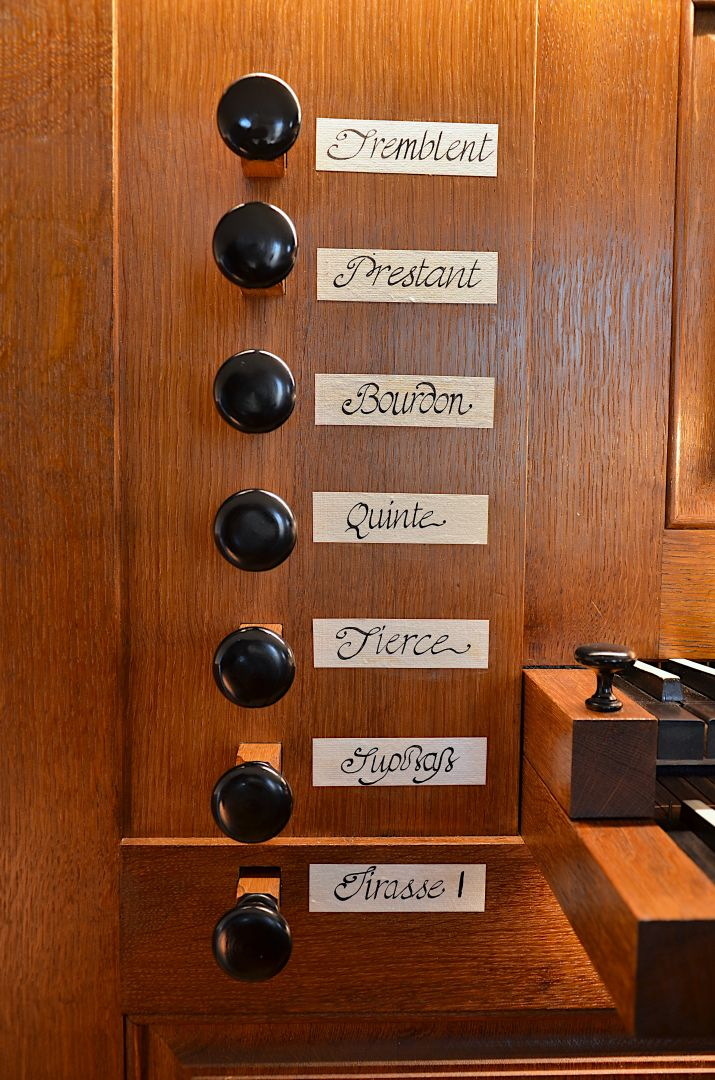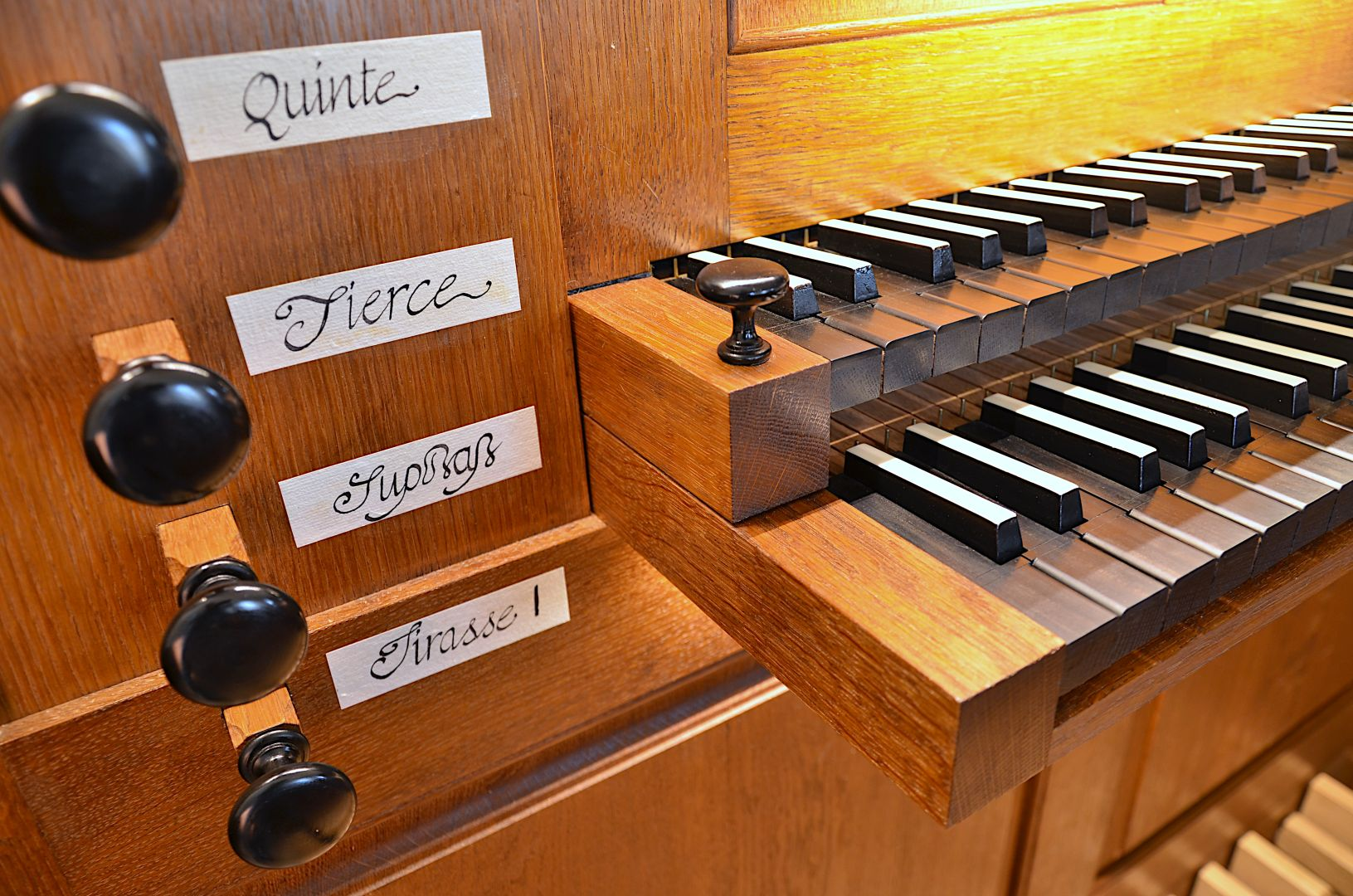Church of Muttersholtz
Construction of a new organ in a case by Jean-André Silbermann for the Protestant church in Muttersholtz
Under the aegis of the Association for the Restoration and Promotion of the Muttersholtz Organ (ARROM), the Town Council of Muttersholtz and the Protestant Parish of Muttersholtz.
Musically, this organ is quite versatile and enables the satisfactory performance of a large répertoire. This reconstructon after Silbermann takes up the characteristics of the Jean-André Silbermann organ and its 1751 case. The intention was not to return to the original state but to build an 'adapted' reconstruction.
The concept of providing a Cornet on a second manual can be found on the Positif at the Musée des Arts Décoratifs in Strasbourg. It is derived from a French practice. It enables numerous possibilities without extra costs or having to enlarge the case.
This 4' organ has one section divided between two manuals and pedal, which makes it possible to line out a chant or accompany it without having to change the registration. Although never effected on the whole range of the keyboard, this disposition remains at one with the Silbermann creations.
This instrument has been an opportunity for our company to combine our passion for both restoration and creation, enhanced by our dedication to the work of the Silbermanns. We were able to put into practice the experience gathered during numerous restoration jobs of organ by members of this organ builder dynasty.
We are very grateful to the members of the Association for their welcome during the work, and in particular to Rolande Wentz, its chairwoman.
10 jeux, II claviers, pédale
| Clavier I - 51 notes C à d''' | Clavier II - 51 notes C à d''' | Pédale, 27 notes |
|---|---|---|
| Bourdon 8’ | Bourdon 8’ (1ère octave commune) | Soubasse 16’ |
| Montre 4’ | Flûte 4’ | Octavebasse 8’ |
| Doublette 2' | Cornet 3 rangs | |
| Quinte 2 2/3’ | ||
| Tierce 1 3/5’ | ||
| Fourniture III rgs |
Accouplement tiroir II/I,
Tirasse I/P et II/P
Tremblant doux
a' 415 Hz tempérament Bach-Jobin



